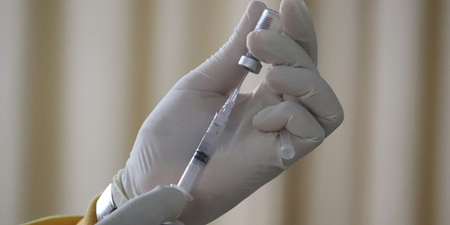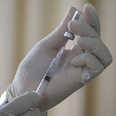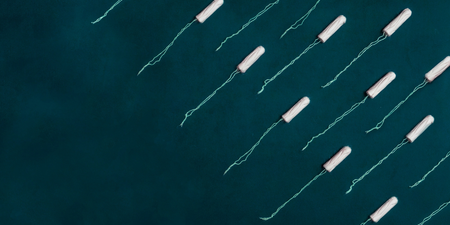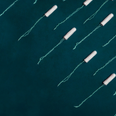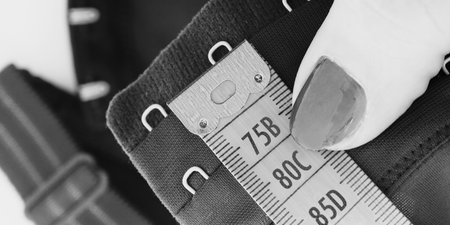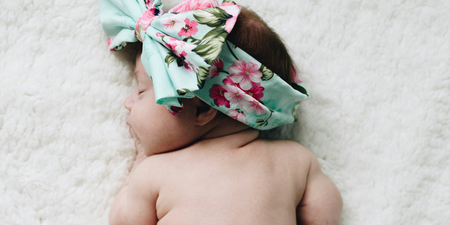Dark, evolution, survival of the fittest. Call it what you will.
Periods can be pretty annoying, painful, even crippling for some. So why on earth does mother nature do this to us?
When you think about it, having a ‘monthly’ period even sounds like A LOT. Too many in fact.
In truth, you could scour the internet and find some odd, even downright crazy answers that researchers have come up with throughout the last number of decades.
But according to a paper published in 2011 by researchers at Yale University, the answer as to why periods even exist pretty much comes down to ‘conflict between mother and foetus,’ and how the womb has always tried to get rid of an embryo with any abnormalities.
This is what our womb has evolved to do – it can recognise when something is wrong or when an embryo isn’t healthy.
In menstruating animals, the body controls the uterus lining/menstruation as a ‘mechanic consequence’ of the hormone progesterone, a hormone produced by the body. This is called ‘spontaneous decidualisation’ as it’s something our bodies just do. It’s spontaneous, if you will.
With humans, embryos can only plant themselves in the uterus wall when that wall is good and ready, with a thick, rich blood supply. The embryo needs to feed off of it’s mother’s body, ensuring it receives adequate nourishment.
In other mammals, when an embryo is formed, the embryo itself will signal a female body to begin making a uterus lining. In humans, our hormones (namely estrogen) cause the wall to thicken, with or without an embryo being there.

Basically, some female mammals allow an embryo to control their uterus lining, while others (humans) build and control their own.
Looking at primates, the study maintains that this making and shedding of the uterus lining (spontaneous decidualisation) may have evolved to protect the mother from an ‘aggressive foetus.’
If we take human embryos and compare them to the likes of cows, a human embryo manages to get right in there, into its mother’s uterus wall, full of blood cells, taking food, water and oxygen from mum’s bloodstream. That means taking a lot of resources away from mum.
With a cow for example, the embryo will just lie nicely on the uterus lining – the mother’s body still has a bit more control as to the resources she’s giving up to her foetus.
So having a uterus lining that becomes thickened and falls away during menstruation could simply be ‘a by-product’ of how our reproductive organs have evolved, in their bid to ensure a weak or abnormal embryo will not take mum’s resources in the womb. After all, human embryos are much more prone to abnormalities.
Humans can have sex any time during a human female cycle, so an egg could be a few days old by the time it gets fertilised. While it can be so easy to get pregnant, there’s still a lot that has to go right for it to happen.
We humans aren’t all that different to our fellow animals we share the world with, but when it comes to menstruation, we can differ quite a bit.
We’re one of the few mammals, besides the likes of certain bats, elephant shrews and primates, to menstruate at all.

The rhesus macaque is one of the few animals that menstruates, like we do
(And if you’re thinking dogs menstruate, apparently it’s not actually menstruation – it’s what’s called an estrus cycle (or being ‘in heat’) that they go through twice a year. Part of this is actually when they ovulate – different again, to us female humans.)
Nowadays, human females are having around 300 to 500 periods in our lifetime, whereas our ancestors were having around 150. Only natural, as we have a longer life expectancy and we now have contraception to stop us from getting pregnant and maintaining that thick uterus lining for longer.
The research in this area, as with many topics, brings a lot of possibilities to the fore, but none can be 100 per cent accurate, at least not for now. There’s always still so much we have to learn.
There are so many theories out there (some absolutely crazy) while others like the above tend to get a little bit closer to solving the riddle that is menstruation.
So, to sum it up, menstruation might exist to prevent women from putting so much health resources, of their own, into an unhealthy or abnormal embryo. It’s a phenomenon where shedding the uterus lining and starting from scratch seems to be a by-product of how reproduction and our wombs have evolved, in natures hopes that a healthy baby will make it into the world, should a woman have her egg fertilised.
No one ever said it was easy being a woman, but we all must admit, as complicated as our bodies might be – they’re feckin’ class.
For the month of February, we’re #OnTheRag here at Her.
We’ll be chatting all things periods, products, and pain as we delve deep inside the uterus to figure out why we bleed and – more importantly – how we cope.
We’ll also be talking to the experts about some of the period related conditions you have heard of, plus some of the ones you haven’t.
You can follow the rest of the #OnTheRag series here or follow our Instagram account for more period related content.
Want to get in touch? Email [email protected].















